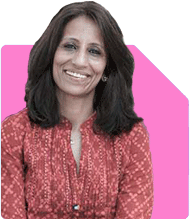Ramalingam Kalirajan |10878 Answers |Ask -Follow
Mutual Funds, Financial Planning Expert - Answered on May 21, 2024
He has an MBA in finance from the University of Madras and is a certified financial planner.
He is the director and chief financial planner at Holistic Investment, a Chennai-based firm that offers financial planning and wealth management advice.... more

Hi Sir, I am 32 years old and my monthly household income is about Rs 1.2 lakh. We have saved close to Rs 3 lakh in SBI Magnum LTEF, nearly Rs 10 lakh in the Provident Fund, Rs 3.5 lakh in NPS, 5 lakhs in post office NSC and an emergency fund of 11 lakhs. I have a hdfc term life insurance with cover of 2Cr upto 85 years with monthly premium 5K. Our monthly expenses are upto 25K. How much should we save in the next 10 years to create a Rs 2 crore retirement corpus? I also need Rs 50 lakhs for our son’s higher education. We have a moderate to low risk appetite. Please suggest some good fund names that I can choose from.
You've done an excellent job of building a diversified portfolio. With savings in SBI Magnum LTEF, Provident Fund, NPS, NSC, and a substantial emergency fund, your foundation is strong. Your life insurance cover of Rs 2 crore also ensures financial security for your family. Monthly expenses of Rs 25K indicate a manageable lifestyle with room for significant savings.
Evaluating Your Financial Goals
You have two main financial goals:
Creating a Rs 2 crore retirement corpus in the next 10 years.
Saving Rs 50 lakhs for your son's higher education.
Given your moderate to low risk appetite, your investment strategy should focus on balancing growth and safety.
Retirement Corpus Planning
To accumulate Rs 2 crore in 10 years, you need a strategic and disciplined approach. Your current investments are a good start, but you will need to increase your monthly savings and choose investments wisely to reach this target. The power of compounding will work in your favor if you start early and remain consistent.
Higher Education Fund
Planning for Rs 50 lakhs for your son's education is a significant goal. Given the time horizon and your risk appetite, starting early with systematic investments in diversified funds will help you reach this target comfortably.
Investment Strategy
Actively Managed Funds Over Index Funds
Actively managed funds are managed by professional fund managers aiming to outperform the market. Though they have higher fees compared to index funds, the potential for higher returns can make a significant difference in achieving long-term goals like retirement and education. Fund managers adjust the portfolio based on market conditions, aiming to maximise returns and manage risks effectively.
Disadvantages of Direct Funds
While direct funds might seem attractive due to lower expense ratios, investing through a Certified Financial Planner (CFP) offers significant advantages. A CFP provides expert advice, helping you choose the right funds, diversify your portfolio, and make necessary adjustments over time. This professional guidance often leads to better investment outcomes compared to navigating direct funds on your own.
Monthly Savings Requirement
To reach Rs 2 crore for retirement and Rs 50 lakhs for education, you need to determine how much to save monthly. Let's consider a hypothetical scenario where you aim for a moderate return. Typically, achieving such goals might require substantial monthly savings, compounded by annual returns. A CFP can help you calculate the exact amount needed based on your current portfolio and expected returns.
Risk Management
Your moderate to low risk appetite suggests a cautious investment approach. Investing in a mix of diversified equity funds, balanced funds, and debt funds can help balance risk and return. This approach protects your capital while aiming for steady growth. High-risk investments might not suit your profile and can be avoided to ensure capital preservation.
Importance of Regular Review
Regularly reviewing and adjusting your portfolio is crucial. Market conditions and personal circumstances change over time. Regular check-ins with your CFP ensure your investments stay aligned with your goals and risk tolerance. Adjustments may be needed to respond to market fluctuations or changes in your financial situation.
Conclusion
Your financial journey so far is commendable. With disciplined savings, a strategic investment approach, and professional guidance, you can achieve your retirement and education goals. Focus on consistent savings, leverage actively managed funds, and seek advice from a CFP for the best outcomes. By doing so, you ensure that your financial future remains secure and well-planned.
Best Regards,
K. Ramalingam, MBA, CFP,
Chief Financial Planner,
www.holisticinvestment.in
You may like to see similar questions and answers below
Ramalingam Kalirajan |10878 Answers |Ask -Follow
Mutual Funds, Financial Planning Expert - Answered on Jul 19, 2024
Ramalingam Kalirajan |10878 Answers |Ask -Follow
Mutual Funds, Financial Planning Expert - Answered on Jun 18, 2024
Ramalingam Kalirajan |10878 Answers |Ask -Follow
Mutual Funds, Financial Planning Expert - Answered on Sep 17, 2024
Ramalingam Kalirajan |10878 Answers |Ask -Follow
Mutual Funds, Financial Planning Expert - Answered on Jun 21, 2025
Naveenn Kummar |235 Answers |Ask -Follow
Financial Planner, MF, Insurance Expert - Answered on Sep 18, 2025
Dr Nagarajan J S K |2577 Answers |Ask -Follow
NEET, Medical, Pharmacy Careers - Answered on Dec 10, 2025
Mayank Chandel |2570 Answers |Ask -Follow
IIT-JEE, NEET-UG, SAT, CLAT, CA, CS Exam Expert - Answered on Dec 10, 2025
Samraat Jadhav |2503 Answers |Ask -Follow
Stock Market Expert - Answered on Dec 10, 2025
Radheshyam Zanwar |6741 Answers |Ask -Follow
MHT-CET, IIT-JEE, NEET-UG Expert - Answered on Dec 10, 2025
Ramalingam Kalirajan |10878 Answers |Ask -Follow
Mutual Funds, Financial Planning Expert - Answered on Dec 10, 2025
Ramalingam Kalirajan |10878 Answers |Ask -Follow
Mutual Funds, Financial Planning Expert - Answered on Dec 10, 2025
Samraat Jadhav |2503 Answers |Ask -Follow
Stock Market Expert - Answered on Dec 10, 2025
Samraat Jadhav |2503 Answers |Ask -Follow
Stock Market Expert - Answered on Dec 10, 2025
Samraat Jadhav |2503 Answers |Ask -Follow
Stock Market Expert - Answered on Dec 10, 2025
Shalini Singh |180 Answers |Ask -Follow
Dating Coach - Answered on Dec 10, 2025









.jpg)
















